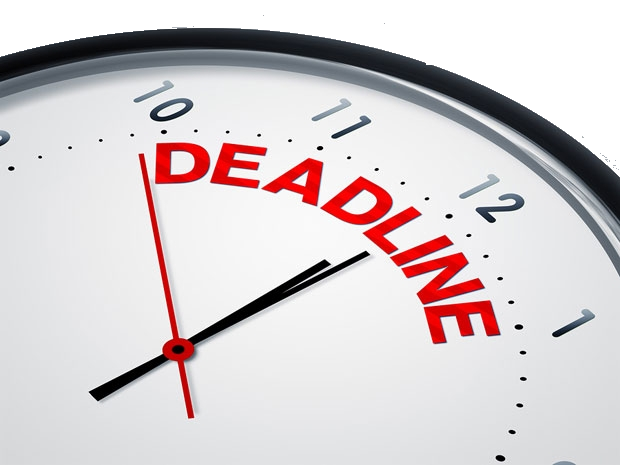Instructions3.docx
FOCUSED SOAP NOTE FOR ANXIETY, PTSD, AND OCD
In assessing patients with anxiety, obsessive-compulsive, and trauma and stressor-related disorders, you will continue the practice of looking to understand chief symptomology in order to develop a diagnosis. With a differential diagnosis in mind, you can then move to a treatment and follow-up plan that may involve both psychopharmacologic and psychotherapeutic approaches.
In this Assignment, you use a case study to develop a focused SOAP note based on evidence-based approaches.
TO PREPARE
· Review this week’s Learning Resources. Consider the insights they provide about assessing and diagnosing anxiety, obsessive compulsive, and trauma-related disorders.
· Review the Focused SOAP Note template, which you will use to complete this Assignment. There is also a Focused SOAP Note Exemplar provided as a guide for Assignment expectations.
· Review the video, Case Study: Dev Cordoba. You will use this case as the basis of this Assignment. In this video, a Walden faculty member is assessing a mock patient. The patient will be represented onscreen as an avatar.
· Consider what history would be necessary to collect from this patient.
· Consider what interview questions you would need to ask this patient.
THE ASSIGNMENT
Develop a Focused SOAP Note, including your differential diagnosis and critical-thinking process to formulate a primary diagnosis. Incorporate the following into your responses in the template:
· Subjective: What details did the patient provide regarding their chief complaint and symptomology to derive your differential diagnosis? What is the duration and severity of their symptoms? How are their symptoms impacting their functioning in life?
· Objective: What observations did you make during the psychiatric assessment?
· Assessment: Discuss the patient’s mental status examination results. What were your differential diagnoses? Provide a minimum of three possible diagnoses with supporting evidence, listed in order from highest priority to lowest priority. Compare the DSM-5-TR diagnostic criteria for each differential diagnosis and explain what DSM-5-TR criteria rules out the differential diagnosis to find an accurate diagnosis. Explain the critical-thinking process that led you to the primary diagnosis you selected. Include pertinent positives and pertinent negatives for the specific patient case.
· Plan: What is your plan for psychotherapy? What is your plan for treatment and management, including alternative therapies? Include pharmacologic and nonpharmacologic treatments, alternative therapies, and follow-up parameters, as well as a rationale for this treatment and management plan. Also incorporate one health promotion activity and one patient education strategy.
· Reflection notes: What would you do differently with this patient if you could conduct the session again? Discuss what your next intervention would be if you could follow up with this patient. Also include in your reflection a discussion related to legal/ethical considerations (demonstrate critical thinking beyond confidentiality and consent for treatment!), health promotion, and disease prevention, taking into consideration patient factors (such as age, ethnic group, etc.), PMH, and other risk factors (e.g., socioeconomic, cultural background, etc.).
· Provide at least three evidence-based, peer-reviewed journal articles or evidenced-based guidelines that relate to this case to support your diagnostics and differential diagnoses. Be sure they are current (no more than 5 years old).
LEARNING RESOURCES
· Centers for Disease Control and Prevention. (2020, April 3). [Video]. https://www.cdc.gov/violenceprevention/aces/index.html
· Dartmouth Films. (2018, September 25). [Video]. YouTube.https://www.youtube.com/watch?v=bAXZVYDNURY
· NCTSN. (2007). [Video].https://www.nctsn.org/resources/promise-trauma-focused-therapy-childhood-sexual-abuse-video
Rubric
|
NRNP_6675 Assignment_Rubric |
||||||
|
Criteria |
Ratings |
Pts |
||||
|
This criterion is linked to a Learning OutcomeCreate documentation in the Focused SOAP Note Template about your assigned patient.In the Subjective section, provide: • Chief complaint• History of present illness (HPI)• Past psychiatric history• Medication trials and current medications• Psychotherapy or previous psychiatric diagnosis• Pertinent substance use, family psychiatric/substance use, social, and medical history• Allergies• ROS |
|
15 pts |
||||
|
This criterion is linked to a Learning OutcomeIn the Objective section, provide:• Physical exam documentation of systems pertinent to the chief complaint, HPI, and history• Diagnostic results, including any labs, imaging, or other assessments needed to develop the differential diagnoses |
|
15 pts |
||||
|
This criterion is linked to a Learning OutcomeIn the Assessment section, provide:• Results of the mental status examination, presented in paragraph form• At least three differentials with supporting evidence. List them from top priority to least priority. Compare the DSM-5 diagnostic criteria for each differential diagnosis and explain what DSM-5 criteria rules out the differential diagnosis to find an accurate diagnosis. Explain the critical-thinking process that led you to the primary diagnosis you selected. Include pertinent positives and pertinent negatives for the specific patient case. |
|
20 pts |
||||
|
This criterion is linked to a Learning OutcomeIn the Plan section, provide:• Your plan for psychotherapy• Your plan for treatment and management, including alternative therapies. Include pharmacologic and nonpharmacologic treatments, alternative therapies, and follow-up parameters as well as a rationale for this treatment and management plan. • Incorporate one health promotion activity and one patient education strategy. |
|
25 pts |
||||
|
This criterion is linked to a Learning Outcome• Discussion include what may be done differently with this patient if student conducted the session again. Discussed the next intervention if you could follow up with this patient. The discussion was related to legal/ethical considerations (demonstrated critical thinking beyond confidentiality and consent for treatment!), social determinates of health, health promotion, and disease prevention that take into consideration patient factors (such as age, ethnic group, etc.), PMH, and other risk factors (e.g., socioeconomic, cultural background, etc.). |
|
5 pts |
||||
|
This criterion is linked to a Learning OutcomeProvide at least three evidence-based, peer-reviewed journal articles or evidenced-based guidelines that relate to this case to support your diagnostics and differential diagnoses. Be sure they are current (no more than 5 years old). |
|
10 pts |
||||
|
This criterion is linked to a Learning OutcomeWritten Expression and Formatting – The paper follows correct APA format for parenthetical/in-text citations and reference list. |
|
5 pts |
||||
|
This criterion is linked to a Learning OutcomeWritten Expression and Formatting – English Writing Standards: Correct grammar, mechanics, and punctuation |
|
5 pts |
||||
|
Total Points: 100 |

 Our orders are delivered strictly on time without delay
Our orders are delivered strictly on time without delay  Our orders are delivered strictly on time without delay
Our orders are delivered strictly on time without delay 


